Today Our Future is Born! 3rd Place at the VGC ’15 Virginia Regional Championships
Hi Nugget Bridge! My name is Alec Rubin, but you probably know me better by my username on the forums, amr97. You might recognize me from Round 4 of the 2014 US Nationals stream or as one of the newer moderators in the VGC room on Pokémon Showdown, but as it turns out, when I’m not lurking in wait to issue pedantic warnings, I actually play some VGC as well. I recently attended the 2015 Regional Championships held in Doswell, Virginia and placed third out of 313 competitors in the Masters Division.
Since I haven’t been around the scene as long as most people, I think it’s best to provide a bit of context on my Pokémon history. I first started playing competitively near the end of 2012, primarily in singles formats such as Neverused. While I enjoyed the Singles experience, and still do on occasion, upon stumbling upon Nugget Bridge sometime in the spring of 2013, I began to become interested in the VGC circuit. However, most of my early VGC teams were designed more for fun than to be competitive. However, near the end of 2013, I learned my father would be visiting a town near Doswell for his job during Regionals. I finished with a record of 6-3, which was really better than I should have done. I then scheduled a college visit to Williams College on the Monday after Massachusetts Regionals so that I could attend that as well, finishing 5-3 this time. Sometime after that, I began practicing more seriously, and my efforts paid off as I placed 19th at the 2014 United States Nationals. Although I had disappointing finishes at the Fall Regionals I attended, my 5-2 NPA record and Premier Challenge wins left me cautiously confident going into Virginia. With my third place finish, I am well in position to achieve my top 40 goal.
As a side note, all of the Pokémon are nicknamed after songs from the Idolm@ster Anime and Game Series.
Team at a Glance






Teambuilding Process
Preparing a team to use this year was actually a pretty difficult process, as I had not played VGC 2013. The sheer number of legal Pokémon and big threats left me lost as to how to teambuild. Eventually, I ended up with a pretty decent sand team with Mega Tyranitar/Mega Salamence/Excadrill/Suicune/Thundurus/Amoonguss, and I had planned to bring it to Virginia. However, after using it at a few Premier Challenges, I noticed that many of my wins were due to flinches and full paralyses, which wasn’t quite optimal for a Regional setting. The team also struggled with Landorus-Therian, especially when my Suicune and Mega Salamence were countered, so I decided to create a more consistent team.
One of my main goals while teambuilding was to create a team that did not need too much Speed control. During the Holiday Scramble, I watched Worlds runner-up Jeudy Azzarelli (SoulSurvivor) use a team based around Kangaskhan, Azumarill, and Togekiss. I noticed that the Kangaskhan-Azumarill combination was very strong, as they were both powerful boosting attackers that opponents struggled to deal with. As such, I decided to use them as my core.


Since Kangaskhan and Azumarill are both set-up sweepers, with Power-Up Punch and Belly Drum respectively, a redirection user was the next logical choice. I didn’t like the Togekiss that Jeudy had been using, as it shared many weaknesses with Azumarill, and Clefable was a nonstarter due to Azumarill taking the Sitrus Berry. This left me the options of Volcarona, Amoonguss, and Clefairy. I tossed Volcarona pretty quickly since many of Kangaskhan’s checks, such as Landorus-Therian and Terrakion, can easily OHKO it with Rock Slide. Clefairy often didn’t feel very useful, as Friend Guard was often irrelevant due to Follow Me, so I chose Amoonguss. Its bulk with Regenerator and synergy in a Fire-Water-Grass core were both, in my opinion, very important strengths.



I knew that I wanted a Fire-type Pokémon to complete my defensive core. My candidates were Heatran, Talonflame, and Rotom-Heat. I’ve always disliked Talonflame and already had two physical attackers, so I eliminated it. The team had a weakness to opposing Talonflame, so I needed a counter for it. Heatran could only OHKO Talonflame with the suboptimal Ancient Power, so I went with Rotom-Heat. I originally used a Choice Scarf variant to further liberate the team from Speed control, which also could surprise Pokémon such as Landorus, Salamence, and Charizard.




With my core intact, I looked for two supplementary Pokémon. The team looked a bit weak to Landorus-Therian, Salamence, and Mega Venusaur, and also lacked an efficient method to deal with Fairy-types such as Sylveon. Bisharp seemed like a natural choice given its strength against all of those Pokémon. It also covered many of Azumarill’s weaknesses, giving the team a supplementary defensive backbone.





For my last Pokémon, I wanted something that could check Mega Kangaskhan and Mega Charizard Y, as well as something that could deal with status moves. Conkeldurr was the obvious choice, as between Assault Vest and Guts it could completely wall Pokémon such as Rotom-Wash and Thundurus.






This left me with a pretty solid team. I was fairly pleased with its performance, but it definitely had flaws. One of the main issues was an inability to react effectively against sweepers after a Tailwind such as Sylveon. Additionally, if an opponent could shut down my priority options, I would often be left in a bad situation. Although the team was fairly successful, I felt that its wins were more due to my skill advantage than the team itself. As such, I stopped using this team about three weeks before Regionals, and instead attempted to teambuild with other Pokémon, such as Mega Gengar and Blaziken. However, none of those ideas really worked out, so on the Tuesday before Virginia I decided that my best plan of action would be to practice with this team despite my reservations, since I already knew how it worked and already had it in-game. Although my practice in the following days went well, I wasn’t entirely pleased with the team, and as such decided to try out Mega Lopunny.
I thought Lopunny might be able to give this team the extra oomph it needed, and so I rebuilt the core a bit to try and accommodate it, although I didn’t expect much. I switched Kangaskhan with Lopunny and Conkeldurr for Assault Vest Landorus-Therian.






I experimented with the item choices, eventually switching Landorus-Therian to Choice Scarf, which forced Rotom-Heat to Life Orb and Bisharp to Focus Sash. Eventually, I concluded that Mega Lopunny could be viable with significant support, but as this team was focused on interplay between team members, it wasn’t great. I also missed Kangaskhan’s Power-Up Punch threat. However, I did notice that Landorus-T, which I had overlooked in the past for being too common, fixed several bad matchups, such as Charizard and Salamence. Even though Landorus-T was weak to Water-types, the team had enough ways to deal with them already. As such, I decided to bring Kangaskhan back, along with returning Life Orb to Bisharp and giving Rotom-H Safety Goggles.






This left me with a team that worked well, despite not quite living up to my original plan of independence from Speed control. I used to dislike Kangaskhan since most players using it didn’t have a good reason why, but what made this team work was that I used it with the intention of team synergy. I was left with a team that was incredibly effective, although not incredibly unusual by any stretch of the word (I had the first, second, and fourth most common Pokémon on my team, and Azumarill, which was unique to this team, was the only Pokémon to see less than six uses). I went 16-0 on Pokémon Showdown on the Friday before the event on a decently established alt, which gave me more than enough cause to bring this group to Regionals despite only having one day of practice. My third place finish was well above my goal of top 16, so the team’s results pretty much speak for themselves.

My Song (Kangaskhan) @ Kangaskhanite
Scrappy / Parental Bond | Jolly
4 HP / 252 Atk / 252 Spe
– Fake Out
– Return
– Power-Up Punch
– Sucker Punch
(Brought in 8/9 Swiss games and 9/9 top cut games; 17/18 total games)
Kangaskhan was previously one of my least favorite Mega Evolutions. Although I’ve always seen its raw strength, I’ve always hated what it does to teambuilding. Don’t get me wrong—with only one weakness, flawless neutral offensive coverage, a boosting option that deals damage, and strong STAB moves mean that Mega Kangaskhan is an absolute nightmare to deal with once it’s on the field. However, its typing also provides it with only a single resistance, making it nearly impossible to safely switch in. As a player who heavily emphasizes switching, this flaw was difficult for me to overlook; I felt pressured into either leading with it or waiting until a lead was knocked out to provide it with a free switch-in. Additionally, nearly every good team either carries Mega Kangaskhan or has several counters to it, making every game either a mirror or unfavorable matchup. However, as its presence on this team makes clear, it still provides unparalleled offensive pressure, and its quick and hard hitting nature works perfectly on this team.
The EV spread is quite simple—it hits hard right off the bat, and frees Kangaskhan from Speed control. Although Pokémon above base 100 Speed typically will invest to outspeed Jolly Kangaskhan, several threats right below the threshold, such as Timid Hydreigon and Modest Mega Charizard Y, might try to outrun some slower Kangaskhan. I think Kangaskhan is scariest when it’s outspeeding its foes, and a Jolly nature allows me to do just that; many Pokémon can be OHKOed before they can get off an attack.
Fake Out was my primary motivation for picking Kangaskhan, as it allows Azumarill to set up Belly Drum uncontested. It also can provide an opening for a teammate to spread status or just deal damage. In any case, a free attack that’s as strong as Fake Out is is always nice. Choosing between Return and Double-Edge was more difficult, but three key factors help me make my decision. Firstly, since my Kangaskhan has no defensive investment, Double-Edge’s recoil would often cause it to faint. With Return, I could sometimes throw out an extra attack, which made up for its weaker base power. Secondly, although Double-Edge’s claim to fame was picking up knockouts on Pokémon EVing to withstand Return, its popularity has killed its niche; many of Double-Edge’s former targets now are built to take the stronger attack. Lastly, after a Power-Up Punch, Double-Edge’s extra power was often unnecessary, so the recoil was meaningless.
Power-Up Punch might be the least common move on this set. The majority of Kangaskhan (at least on Battle Spot) have switched to Low Kick, and honestly I don’t like that at all. I thought Hammer Arm was a decent choice in VGC 2014 due to its surprise factor, but now that Low Kick is so common, it really doesn’t do what it’s supposed to. Power-Up Punch makes Kangaskhan extremely threatening, especially against unsuspecting opponents. After an Attack boost, it OHKOes nearly the entire metagame. Without the boost, Kangaskhan does good damage, but can’t seem to find straight-up knockouts. Additionally, I was able to abuse the common turn one double Protect (guarding against Fake Out) by having Kangaskhan Power-Up Punch its teammate, which could often win games alone due to the power of a boosted Kangaskhan.
Sucker Punch rounds out the set, and it was pretty good as a supplementary move. Initially, the move didn’t strike me as particularly good, as every Ghost-type except for Aegislash can just use Will-O-Wisp to dodge it. I tested both Crunch to reliably hit Ghost-types and Ice Punch for Landorus-Therian and Salamence, but in the end I found the priority to be more helpful than a relatively unnecessary coverage move, even if Sucker Punch didn’t really cover Ghost-types. At +2, Sucker Punch hits harder than an unboosted Return, which gives Kangaskhan the ability to quickly pick off faster threats such as Latios and Greninja (after Protean).

Trial Dance (Azumarill) @ Sitrus Berry
Huge Power | Adamant
196 HP / 252 Atk / 20 Def / 12 SpD / 28 Spe
– Aqua Jet
– Play Rough
– Belly Drum
– Protect
(Brought in 7/9 Swiss games and 5/9 top cut games; 12/18 total games)
Azumarill was definitely the MVP of this team at the tournament, and it’s not hard to see why. Huge Power boosts its attack stat to a fantastic 224 (the equivalent of having base 152 Attack), and it can boost immediately to +6 Attack through Belly Drum. I think that Azumarill has definitely been one of the more overlooked Pokémon in the format so far, especially given the success of other bulky Water-types such as Suicune, Milotic and Rotom-Wash. Although it has suffered residually from the popularity of Sylveon (and thus Fairy-type counters such as Gengar), many players use Steel-types to check Sylveon, which Azumarill deals with just fine. With support from its teammates, Azumarill was often able to Belly Drum and sweep an opponent’s entire team because they simply had no way to stop +6 Aqua Jet.
Sitrus Berry is required: it keeps Azumarill healthy (at 75% HP) after a Belly Drum, providing some well-needed extra bulk. The EV spread, on the other hand, is a bit more creative. Maximum Attack gives Azumarill as much mileage as possible off a Belly Drum, while allowing it to hit decently hard even unboosted. The Speed EVs were designed to Speed creep other base 50 Speed Pokémon, most notably Sableye, opposing Azumarill and Mega Mawile (Play Rough has a notably higher chance to OHKO 252 HP Mega Mawile than Aqua Jet at +6). The HP EVs, hitting a stat of 200, make Sitrus Berry as efficient as possible: an odd stat would cause the berry to fail to activate after a Belly Drum, while even numbers that are not a multiple of four lose a single point of HP due to rounding. The Defense EVs allow Azumarill to withstand a Double-Edge from Jolly Mega Salamence.

Flower Girl (Amoonguss) @ Rocky Helmet
Regenerator | Sassy
188 HP / 164 Def / 156 SpD
IVs: 0 Spe
– Spore
– Rage Powder
– Giga Drain
– Protect
(Brought in 2/9 Swiss games and 8/9 top cut games; 10/18 total games)
Amoonguss is an excellent support Pokémon since it demands attention with Spore and Rage Powder, unlike more passive Pokémon such as Cresselia. Its usage numbers are slightly skewed; although I did bring it to approximately 50% of my games in practice, Amoonguss was actually more useful against lower-caliber players, so I expected greater usage in Swiss. This anomaly occurred due to team matchups; in seven out of my nine Swiss games, my opponent had a heavy spread presence, Mega Salamence or Metagross (which could OHKO Amoonguss), or multiple potential Taunt users, while two of the three teams I played in top cut were heavily based on Trick Room. Amoonguss was generally fantastic when I got to use it, and although it wasn’t quite as flashy as Kangaskhan or Azumarill, it definitely got the supporting job done.
I chose Rocky Helmet over Black Sludge for two reasons. For one, it turned Amoonguss into a decent Kangaskhan counter; if I could switch Amoonguss into a predicted Low Kick, opposing Mega Kangaskhan would sometimes KO themselves if they attempted to then knock out Amoonguss with Double-Edge. Also, Rocky Helmet synergizes well with Bisharp’s Assurance, turning Rage Powder into an offensive weapon. Regenerator greatly enhances Amoonguss’s role as a pivot, allowing it to switch in, Rage Powder away a couple of attacks, then switch back out and stay relatively healthy. It also avoids finicky paralysis and poison from Effect Spore. The EV spread allows Amoonguss to almost always survive Mega Kangaskhan’s Double-Edge, as well as Choice Specs Hydreigon’s Fire Blast. Although there is a slightly more efficient spread, this one gains an extra point of HP from Regenerator, so the difference is essentially negated. The minimum Speed allows Amoonguss to serve as a solid Trick Room counter.

Smile Taisou (Rotom-Heat) @ Safety Goggles
Levitate | Modest
252 HP / 4 Def / 108 SpA / 4 SpD / 140 Spe
– Thunderbolt
– Overheat
– Will-O-Wisp
– Thunder Wave
(Brought in 7/9 Swiss games and 3/9 top cut games; 10/18 total games)
Rotom-Heat is in a strange position in the current metagame. Although it is effective against almost all of the most common Mega Evolutions, it is no longer the sole defensive Fire-type that it was in last year’s format and now has to deal with a surge of bulky Water-types, Landorus-Therian, and Terrakion. However, Rotom-H’s unique typing completes my Fire-Water-Grass core, and allows it to deal with threats such as Mawile, Talonflame, and Charizard. It has a fantastic ability to spread status to support my team while still hitting decently hard.
After I gave Rotom-H’s Choice Scarf to Landorus-T, I wanted a defensive item. Sun teams, Amoonguss, and Breloom were causing this team a lot of trouble, so Safety Goggles was the obvious choice. At Regionals, it ended up being useless, as no powder-based moves were used against Rotom-H; still, it significantly afffected several matchups, so I would have kept it regardless. The EV spread is fairly simple: enough Speed to outspeed Adamant Bisharp by two points (catching some Speed creepers), maximum HP for efficient defensive investment, and a bit of Special Attack to just hit harder in general.
I chose to use Thunderbolt over Volt Switch since whenever Rotom-H was on the field, I generally wanted it to stay in to spread status or deal constant damage, which Volt Switch could sometimes hinder. Overheat and Will-O-Wisp are standard for a multitude of reasons. Although I never used it at Virginia, I chose Thunder Wave over Protect, since, despite my goal of ignoring Speed control, it was a nice option to counter Tailwind and could surprise opponents expecting the standard Protect. While I never ended up needing it at Regionals, I also never needed Protect, so it was still a nice option to have in my back pocket.

BANGxBANG (Landorus-Therian) @ Choice Scarf
Intimidate | Adamant
12 HP / 252 Atk / 92 Def / 4 SpD / 148 Spe
– Earthquake
– Rock Slide
– Knock Off
– Superpower
(Brought in 7/9 Swiss games and 4/9 top cut games; 11/18 total games)
Landorus-Therian is the most common non-Mega Pokémon for a good reason: with base 145 Attack, a fantastic ability in Intimidate, and super effective moves against several of the most popular Pokémon, it might be surprising that Landorus-T doesn’t see even more use. Having a Choice-locked Earthquake might seem to conflict with the rest of the team, given that I only have one immunity and lack Protect on Kangaskhan, but the other strengths that Landorus-T had made up for it; Earthquake was actually its least-used move.
I think that Choice Scarf Landorus-T is a bit overrated, but it was the right item for this team. I valued the ability to outspeed threats such as Kangaskhan, Gengar, and Charizard and take them out before they could begin to be a threat (my priority options further enhanced this option). Maximum Attack allowed Landorus-T to be as effective as possible, while also maximizing Superpower’s KO chances on Mega Kangaskhan (it’s still only a 7/16 chance). The defensive EVs allows it to always withstand a +1 Sucker Punch from Life Orb Bisharp, while the Speed gives it the ability to outspeed Jolly Weavile.
Earthquake, Rock Slide and Superpower are all staple moves on Landorus for their coverage, so I added them to the set right away. Rock Slide’s infamous flinch chance ended up winning me a game in top 16 against Chris Danzo (Lunar). Knock Off was a fairly arbitrary choice; I added Landorus-T at the last minute and didn’t do too much testing. In the past, U-turn had not been very helpful, and I felt that it would not synergize well with this team. I considered Stone Edge (to beat Wide Guard) and Hidden Power Ice (for the mirror), but Knock Off’s utility and ability to hit Ghost-types gave it the nod. It ended up being the best choice for the tournament, since I didn’t face a single situation where an alternate move would have been useful.

Smoky Thrill (Bisharp) @ Life Orb
Defiant | Adamant
4 HP / 252 Atk / 252 Spe
– Sucker Punch
– Iron Head
– Assurance
– Protect
(Brought in 5/9 Swiss games and 7/9 top cut games; 12/18 total games)
Bisharp was fairly underwhelming. Although it was useful against opponents with Intimidate and provided a nice set of resistances, I found myself mostly relying on its raw power to blow through opponents, something that’s probably unsustainable against better players. Given its popularity at Regionals, it might have been a bad choice for me as a player or for the team, but I think a different, more defensive Steel-type such as Aegislash or Metagross could have been better. Still, Bisharp was able to carry me through the early rounds via its sheer strength, which is nice at the Premier Challenge/Regional level, and having STAB Dark-type attacks is always appreciated.
This is the standard Bisharp set, with the exception of Assurance. Although the move gained a lot of traction after being used by Wolfe Glick (Wolfey), Knock Off has become the most common fourth move on Bisharp in this metagame. I think that Knock Off is the right choice on almost all teams, but since this team has plenty of ways of getting the Assurance boost (including two priority users, three Pokémon faster than Bisharp, and Rocky Helmet Amoonguss) I had a lot of opportunities to pick up surprise knockouts on Pokémon that Bisharp can’t typically OHKO.
Common Combinations
 +
+ 
This combo was the core this team was based on. The basic idea is to flinch the bigger opposing threat with Fake Out to allow Azumarill to get a Belly Drum off. However, this duo has more nuanced play as well, such as using Power-Up Punch and Protect (expecting a double target on Azumarill), or the all-in play of Power-Up Punching Azumarill and Belly Drumming (predicting a double Protect or switch).
 +
+  /
/
This is the classic Rage Powder and setup combination. Again, the idea here is to use Rage Powder and either Power-Up Punch with Kangaskhan or Belly Drum with Azumarill, although, of course, there are other potential plays. I can Fake Out with Kangaskhan or Protect with Azumarill and Spore a threat—the former is especially useful against Taunt users such as Thundurus. One theoretically useful play is to lead with Azumarill and Amoonguss, set up a Belly Drum, and then switch out to Kangaskhan, leaving me with a Fake Out and a +6 Aqua Jet to rip through the opposition.
 +
+ 
While Rotom-Heat and Azumarill obviously cover each other well defensively, Thunder Wave could also allow Azumarill to safely use Play Rough against Grass-types or bulky Water-types, picking up easy OHKOs after a Belly Drum.
 +
+ 
These two get a special mention as they allow me to completely ignore Breloom and Amoonguss, eliminating half the opposing field whenever one of those two were out.
 +
+  / (everyone else…)
/ (everyone else…)
This is a pretty interesting combination. A fast Rock Slide and Assurance make for a VGC 2014-esque combination, and Landorus-Therian can also take out threatening Fire-types with Earthquake or Rock Slide. As a side note, Bisharp can have its Assurance boosted by every member of the team, allowing for a variety of combinations on that front.
 +
+ 
Rotom-Heat is this team’s only Ground immunity, so these two were naturally often seen when I needed to use Earthquake. They were also a strong pair against opposing Landorus-T, since I could switch them into an opposing Earthquake without taking damage.
 +
+  /
/
A neat trick that I used was to switch in Landorus-T against physical attackers who expected to knock out Kangaskhan or Azumarill, allowing them to set up after surviving an attack due to Intimidate. I did this especially often against Close Combat users, allowing Kangaskhan to barely endure the attack and clean up afterwards.
Weaknesses

Mega Venusaur was probably my worst Mega matchup (ironic considering how much I’ve liked using Mega Venusaur in the past). Of course, I ended up playing two in top cut. My team does not have a solid answer to its massive bulk, and although Rotom-Heat can wall Sleep Powder variants to some extent, the bulkier Leech Seed variants can do my team in. Usually my best best was to relentlessly attack it, either with a boosted Assurance or with a boosted Return.

Gengar threatens most Kangaskhan teams, and this one is no exception. This weakness also includes Ghost-types with Will-O-Wisp such as Jellicent, Cofagrigus, and Dusknoir. Since Mega Kangaskhan couldn’t do much, keeping Scrappy for Fake Out was usually a good gambit. A Knock Off from Landorus-T or Assurance from Bisharp could typically take pesky Ghost-types out as well.

Despite using it myself, Rotom-Heat still gave me trouble. This team has several issues with it: Safety Goggles circumvents Rage Powder (allowing for free Will-O-Wisps), it is usually bulky enough to tank Rock Slides from Landorus-T (or can outright knock it out with Hidden Power Ice), it is typically faster than Bisharp, and it is one of the few Fire-types not walled by Azumarill. Generally, smart play and good predictions were enough to beat it, although it never felt good to know that I’d probably have to make a lot of 50/50 calls.

Due to how focused I was on stopping the more prevalent Landorus-T, this team didn’t really have any way to deal with Garchomp besides Azumarill. However, Azumarill was more than enough against the two Garchomp I faced, although against better players it could be a major threat. Still, 21 Landorus-T to two Garchomp in top cut suggests that most top players aren’t using the Dragon-type shark.
Conclusion
Overall, I was very happy with my results from this tournament. Although I wasn’t able to win, I had my best tournament finish to date. Funnily enough, in the top cut matches I played I was actually very relaxed and had a lot of fun, so I’m not complaining about my finish. This puts me in a very solid spot in terms of Championship Points, as I am currently 8th in the country. I hope to try to continue to improve before Nationals, and I hope to have a lot of fun watching the metagame evolve in this exciting format. Goodbye for now, but with any luck, regardless of whether you’re a seasoned veteran or a new player yet to attend your first event, I hope we’ll be able to meet at the World Championships someday!
21 Responses to Today Our Future is Born! 3rd Place at the VGC ’15 Virginia Regional Championships
Leave a Reply
You must be logged in to post a comment.

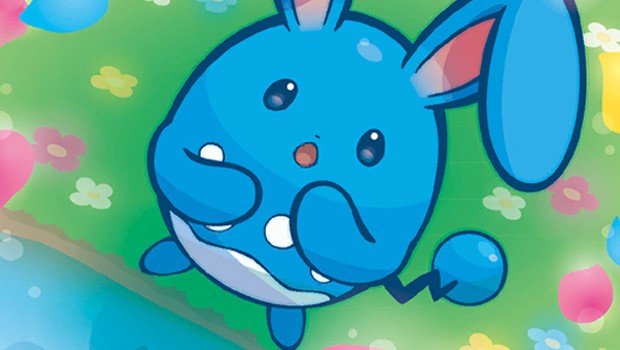
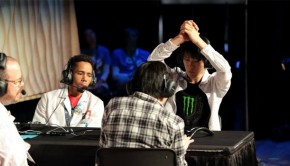

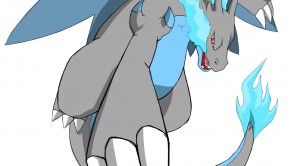
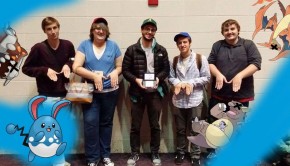
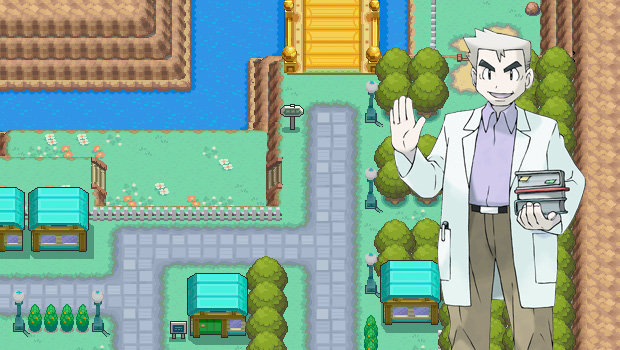




Ohio Crew 4 Worlds!
I like the team, congrats.
Cone you dig it?
Great report, Alec! I really like your team, and your justification for Assurance over Knock Off was really solid. Good luck at your next event!
There was a Kangaskhan… Otherwise cool team
Excellent report and great job, Alec, and props for testing out Lopunny even though in the end you decided against using it. There are definitely a lot of similar thoughts written here that I thought about when making my team for St. Louis, and that’s pretty neat. I definitely sided with the other side of the coin here with Lopunny though; I think that Lopunny has, for lack of a good way to put it, more underhanded tactics that help Azumarill and its other team members out rather than acting as a main offensive force.
How does Kangaskhan deter one’s ability to make an interesting team? Yes, I think Kangaskhan is overused, but here, it has a great concept/role. Alec wanted to use Pokemon with boosting attacks, and the two popular megas with that asset are Salamence and Kangaskhan. While Salamence may have been a decent choice looking at typing, I think, however, Alec also wanted some Fake Out pressure and more bulk, which you can see proved in the partners section, where Kangaskhan is seen in three duos Mega Salamence would not fit in. Mega Kangaskhan is a really good mega, and, while this is not always the case, it really complements this particular team.
Very nice team, Alec! Rotom-H is an underrated Pokemon. It has a really nice typing, despite it’s semi-shallow Movepool.
I have no problem with Kangaskhan I’ve just been seeing it every where and is kind of a bore at this point and I think the reason it fit on this team so well is that it was one of the first Pokemon on his team so he built the team with it in mind
Props for using Lopunny! Actually I have tested Lop a lot, and I think that maybe it would have been more useful here. OFC you would have lost a bit in raw power,but gaining in speed and the ability to beat gengar and to disrupt your opponents would have made life easier for you Azumarill and Landorus for the cleanup!
Congrats for your 3rd place! 🙂
Congrats on your T4 finish, Alec. Glad to see that at least someone else has been using an Assurance Bisharp in 2015.
Speaking of Assurance, correct me if I’m wrong, but wasn’t Assurance Bisharp in 2014 popularized by Sejun? I can’t really remember Wolfey ever using a Bisharp in 2014.
I believe he used on it on his Massachusetts Regionals team, although given that it didn’t make Top Cut it’s understandable that people probably don’t recognize it from him. To be brutally honest I don’t know whether Sejun used it or if he did so before Wolfe, given how I wasn’t very active on the scene until closer to Nationals time.
I can definitely feel the connection as a #ohiogangster and as a fellow man who plays a Kangaskhan with “song” in its name. Cool team–pretty similar what I’ve played for a while, really. Only I’ve been playing with Heatran over Rotom, Sylveon + Lapras over Azu, and Cress over Amoonguss give or take. I’m still trying to figure out the new format though with my run in VA being as it was. Also…
I laughed. And cried… ;-;
Awesome team dude, nice to see someone else using Azumarill hands down my favourite pokemon to use last gen though not been as effective for me ths gen it’s cool to see it’s working for you 🙂
Great team kind of reminds me of my XY team.
I enjoyed the beginning of this team report a lot because your perspective is really interesting to me, and I think you made a great team call for your situation.
I remember when I first saw the VA results, I thought it was interesting you had used the team you did because it made a lot of sense to me. I think early in a big format like this everyone is a little bit lost for the first set of Regionals. While many of the players had been around longer fell back on teams that felt a little more 2013 (see: all the Lando/Thund teams and random 2013-looking teams with Kangaskhan thrown in, for instance), I was curious what the players who had broken out with 2014 and didn’t have that 2012-13 experience would use. I think what you opted to use here was pretty smart: you have Lando-T bringing the team forward a little, but otherwise it is a team that of 2014 mainstays that you’ve had time to get comfortable with. Kang/Azu/Shroom stands out, but even using Assurance on Bisharp and the whole Bisharp/Kang/Shroom thing is a lot more 2014 than 2015. That thread on team comfort isn’t wrong: I think almost everyone who did well at this Regionals found ways to make what they were comfortable with using work in a new format, and I think you did a particularly good job of that, too.
Thanks for doing the write-up.
2015 is the new 2013, but apparently 2015 is the new 2014 as well. Congrats on your run and thanks for the team analysis.
How did you typically play Kangaskhan mirrors, especially if both sides led them?
Usually it was pretty variable depending on what they would lead next to it as well as what they might usually have in the back, although there were a few things I kept going back to. Switching Amoonguss into a predicted Fake Out or Low Kick was really helpful, since not only could I theoretically KO a Double Edge Kangaskhan with Amoonguss alone, but it softened Kangaskhan up enough as to where a boosted Assurance, +6 Azumarill Belly Jet or Landorus Superpower would take out most variants without having to worry about damage rolls. Rotom-H Will-o-Wisp was obviously very helpful as well, particularly if I got an Intimidate off beforehand; another neat trick with Rotom-H would be, if I were facing a Kangaskhan + Taunt user, to instead Thunderbolt/Overheat the Kangaskhan slot and pick up the free damage. Superpower on Landorus-Therian was also huge no matter when I got it out, since even if it didn’t OHKO outright I had so many priority elements on the team I could easily pick off the remaining bit of health. My own Kangaskhan being Jolly really helped as well, particularly in that I’m generally willing to make gutsy plays like risking speed ties or Power-Up Punching my partner on a predicted switch in–Kangaskhan + Azumarill lead with Amoonguss in the back was a nice option against opposing Kangaskhan, since if they couldn’t immediately threaten them with their Kangaskhan’s partner, since I got an easy set up on one Pokemon and a good amount of damage on Kangaskhan as long as I predicted which of my Pokemon it would target.
I was wondering about the spread for landorus. it says that with those EV’s it can withstand +1 sucker punch from LO bisharp 100% but that isn’t even close to the percentages on the NB or showdown calculators are showing me. wondering what happened here.
I’d assume it’s some sort of error in your calculations. Perhaps you have the levels or EV’s set wrong, or are calculating for Knock Off instead?
+1 252+ Atk Life Orb Bisharp Sucker Punch vs. 12 HP / 92 Def Landorus-T: 140-165 (84.3 – 99.3%) — guaranteed 2HKO
I’ve also actually survived that attack multiple times with this spread in a game scenario, so I don’t think it’s a calculation error on my part–maybe try again and PM me if you can’t get it to work so we can sort it out better.
I just figured out why I was getting a strange value, I mean I figured out a part of the reason. There is some internal error going on in these two calculators. When i select regular Landorus the calculation is spot on, but when i select Landorus-T the calculation is thrown off by around 30 percent.
When selecting a mon with Intimidate it automatically lowers (increases in the case of Defiant) the opposing mons Attack by one stage to account for it, you probably set the +1 yourself and then selecting Lando-T made it +2 in the calc.